1. Bacchanalian Feasts That Turned Into Riots
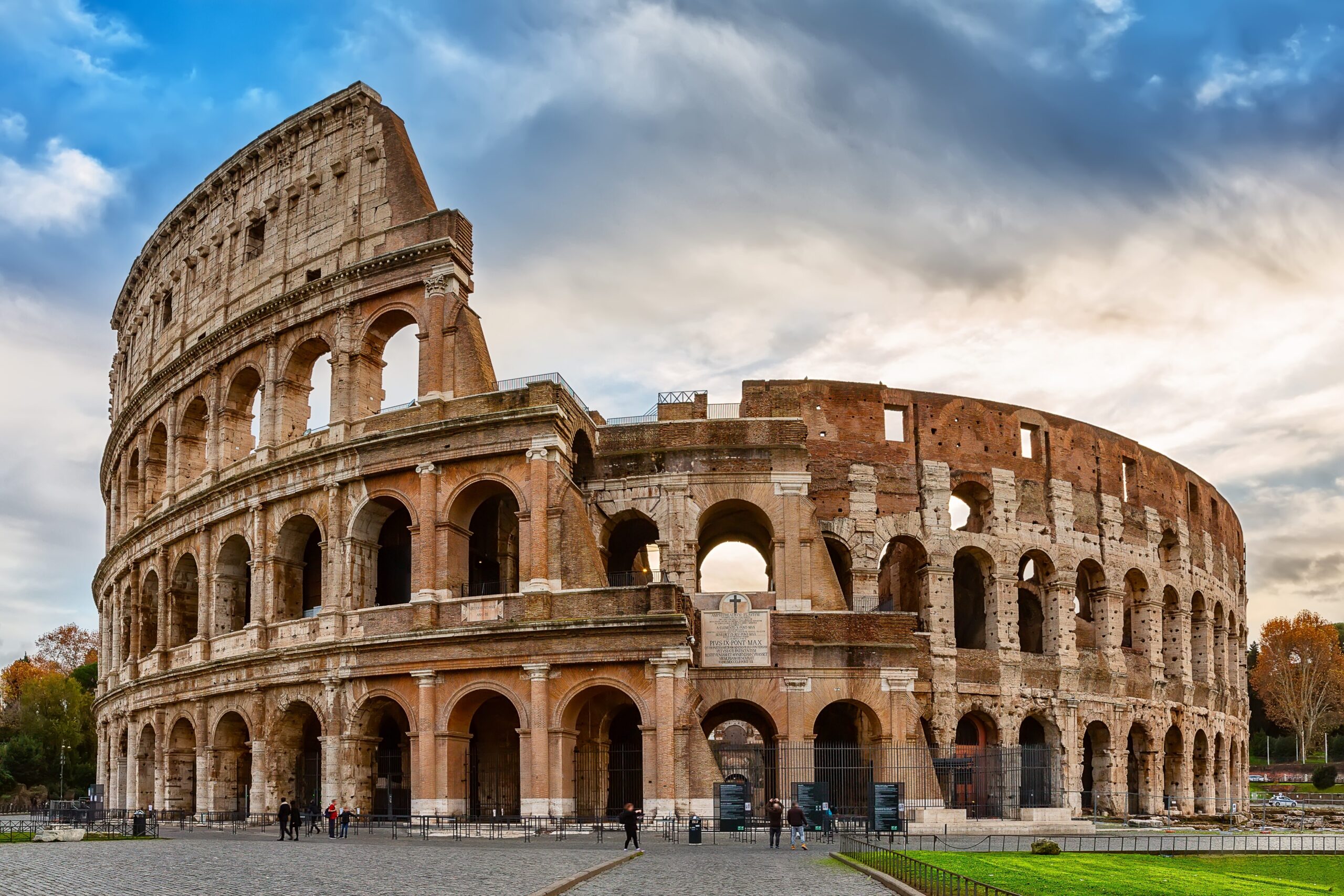
The Romans knew how to throw a wild party, but their Bacchanalian festivals took things to another level. Originally, these religious festivals were meant to honor Bacchus, the god of wine, but over time, they turned into all-out debauchery. Picture people drinking until they couldn’t stand, engaging in all kinds of unrestrained behavior, and causing such chaos that the Roman Senate eventually had to crack down on them. These secret gatherings got so out of hand that the government feared they could be used to overthrow the state. In 186 B.C., the authorities restricted the number of participants, but that didn’t stop Romans from finding other ways to indulge says Yahoo.
Despite the restrictions, underground Bacchanalian feasts continued in secret, often involving bizarre initiation rites and unpredictable behavior. Some accounts even claim that attendees took part in rituals that involved animal sacrifices, chanting, and frenzied dancing. It wasn’t just about drinking either—some festivals encouraged behavior so extreme that they made modern-day raves look like book club meetings. The parties became so infamous that later historians painted them as cult-like conspiracies, though the truth was probably somewhere between wild celebration and outright hysteria adds Greek City Times.
2. Vomiting Mid-Meal to Keep Eating
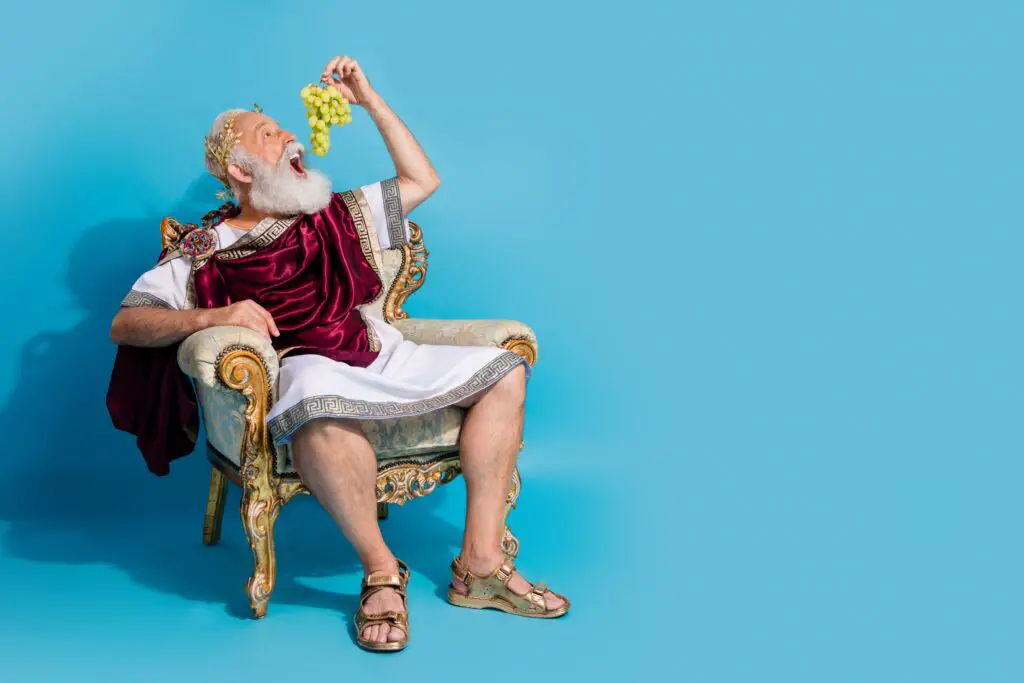
Roman banquets weren’t just about eating; they were about eating as much as humanly possible. At the most extravagant feasts, wealthy Romans would eat so much that they had to excuse themselves to vomit—only to come back and eat more. They even had designated places called vomitoriums, though contrary to popular belief, these weren’t actual puke rooms but rather exit halls in amphitheaters. That didn’t stop guests from using them for a quick purge before heading back for another round of roasted peacock or stuffed dormice shares Australian Broadcasting Corporation.
The idea was that indulgence should have no limits, and throwing up was just a way to make room for more excess. While this might sound ridiculous now, it was considered perfectly normal in high society. In fact, some wealthy hosts encouraged guests to purge so they could continue enjoying rare delicacies. If you’ve ever regretted eating too much at a buffet, just be glad no one expected you to take a break and start all over again shares the Spectator.
3. Gladiator Blood as a Beauty Secret

The Romans were always looking for the next big thing in beauty, and for some, that meant drinking gladiator blood. It was believed that the blood of a fallen gladiator contained special powers, especially for improving health and complexion. Some thought it could cure epilepsy, while others believed it gave them strength and vitality. Women even used it as a kind of ancient skincare treatment, dabbing it on their faces in the hope of maintaining youth.
Considering how brutal gladiator battles were, it’s disturbing to imagine people rushing to collect the blood of the deceased. Physicians of the time even recommended it as a medicinal remedy, though there’s no real science to back up these claims. Still, Romans had no issue with turning violent entertainment into a beauty and wellness routine. If you think modern beauty trends are extreme, just be glad no one’s suggesting a blood mask from a defeated fighter.
4. Public Bathhouses That Got a Little Too Personal
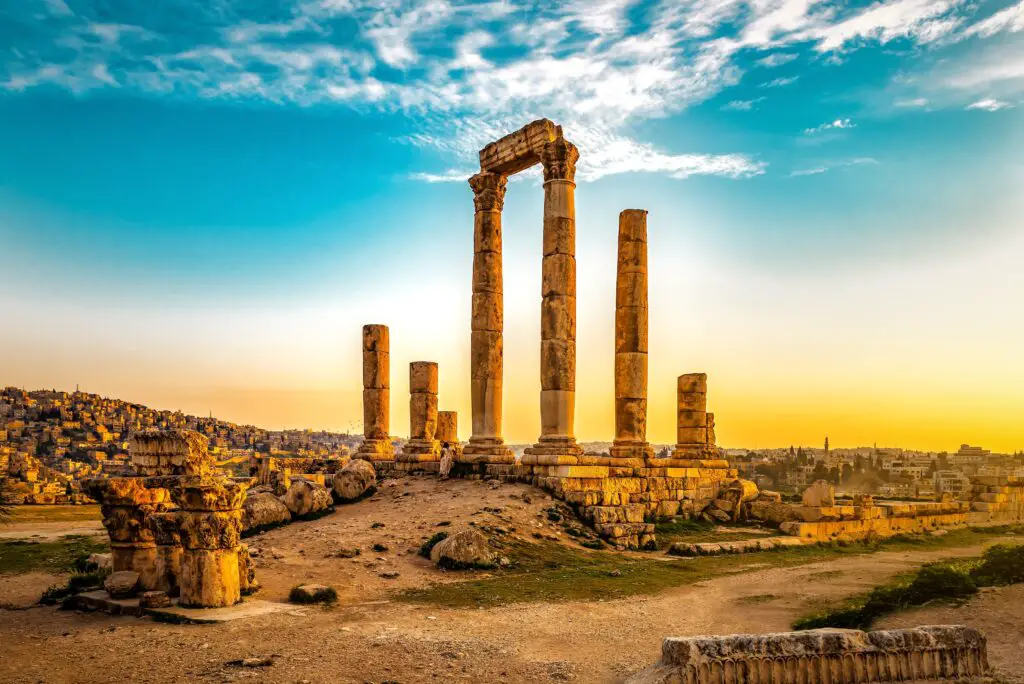
Roman bathhouses weren’t just for getting clean—they were social hotspots where people gathered to gossip, make business deals, and engage in all sorts of extracurricular activities. These massive public baths had separate areas for hot and cold plunges, saunas, and even exercise rooms. But not all bathers were there just for hygiene. Some bathhouses became notorious for late-night rendezvous, attracting those looking for a little more than a relaxing soak.
Despite being open to all classes, the wealthy often had private spaces within the baths where things could get even wilder. Some even hired musicians and performers to entertain them while they lounged in the water. It wasn’t uncommon for people to drink, feast, and enjoy all kinds of pleasures while supposedly just taking a bath. Think of it like a modern-day spa that secretly doubles as a nightclub.
5. Wild Animal Hunts for Entertainment
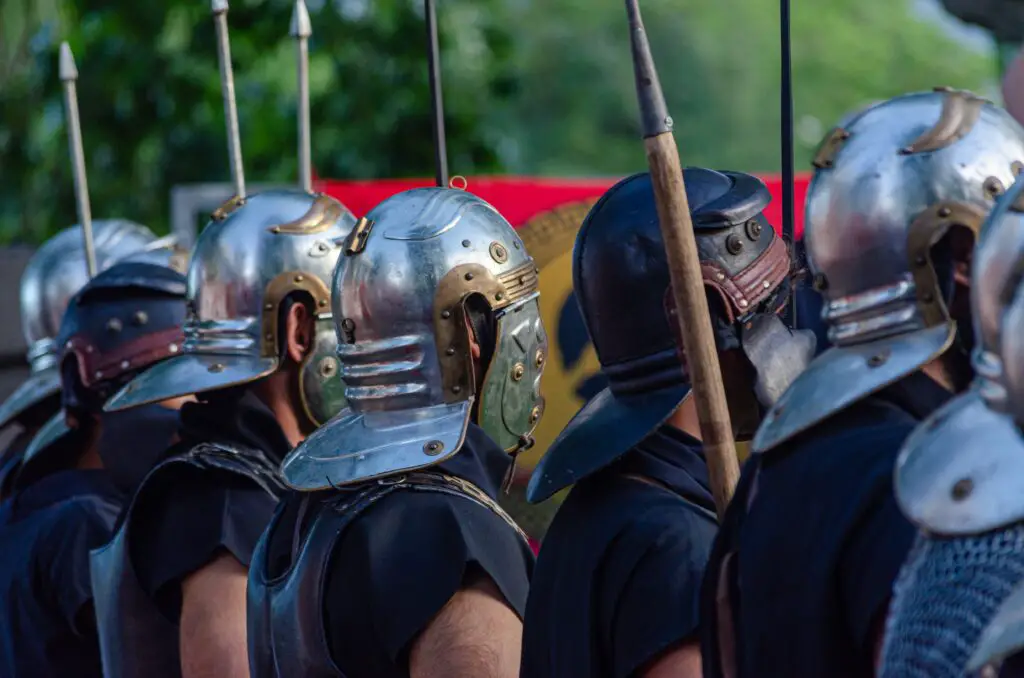
Modern reality shows have nothing on the Roman appetite for live entertainment. One of their favorite forms of amusement involved watching exotic animals fight to the death in massive arenas. These venationes featured creatures like lions, elephants, and crocodiles battling against each other—or against condemned criminals and unlucky gladiators. The Romans imported thousands of animals from Africa and the Middle East, nearly wiping out entire species in the process.
For the audience, it was all about the thrill of the spectacle, with no concern for the sheer brutality of it. Some emperors even staged grand hunts in which they slaughtered hundreds of animals in a single event. Emperor Commodus, for example, reportedly slaughtered dozens of big cats in front of cheering crowds. While today’s parties can get rowdy, at least they don’t involve someone taking down a rhinoceros with a spear.
6. Wine That Was Basically Poison

Romans loved their wine, but their version of it was nothing like what you’d find at a wine shop today. They often mixed it with lead to enhance the flavor and preserve it longer. Lead poisoning was a real issue, but at the time, no one seemed to connect their frequent illnesses with their drinking habits. In fact, they took things even further by adding ingredients like honey, seawater, and herbs, creating a cocktail that was both potent and dangerous.
Because water wasn’t always safe to drink, wine was the go-to beverage for everyone, including children. The elite took pride in their ability to drink excessively, and some emperors were known for their legendary alcohol-fueled parties. While modern cocktails can get creative, at least they don’t come with a side of brain damage.
7. Group Affairs That Made Even Emperors Blush
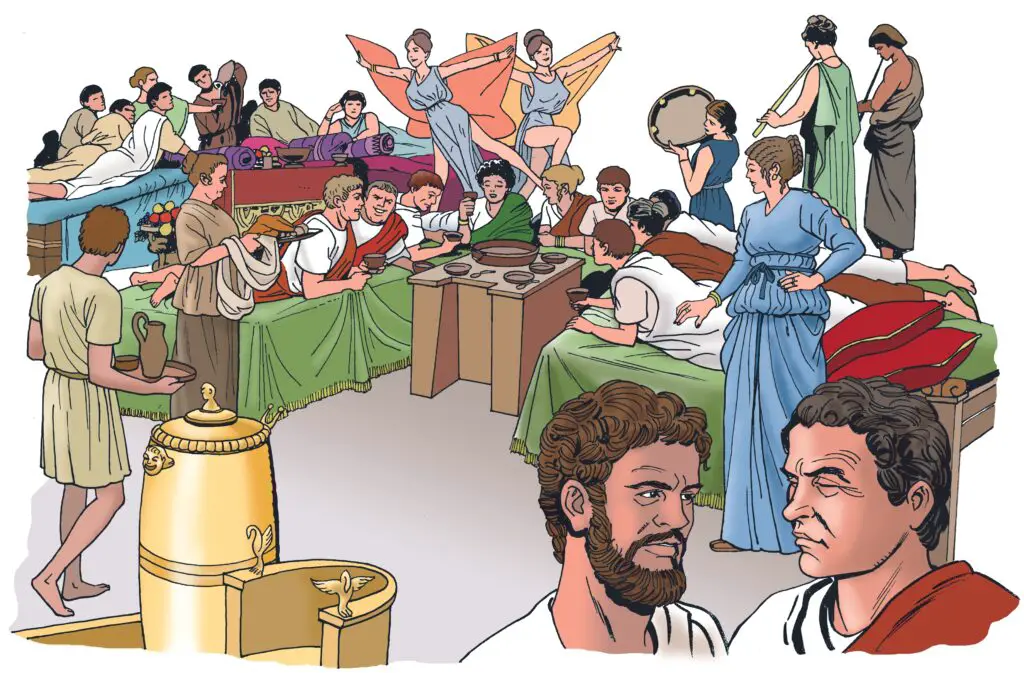
The Romans weren’t exactly shy when it came to their celebrations, and some of their most notorious gatherings put today’s wildest parties to shame. While not everyone participated in these scandalous affairs, certain emperors were famous for hosting extravagant affairs. Caligula and Nero, in particular, had reputations for turning their palaces into dens of pleasure, complete with elaborate feasts and unrestrained indulgence.
These events weren’t just about excess; they were power plays, meant to show dominance and wealth. Some of these parties were so outrageous that they were later written about as cautionary tales. Whether all the rumors were true or just exaggerated by enemies of the empire, there’s no doubt that some Romans took partying to extremes. It makes today’s celebrity scandals look downright boring in comparison.
8. Dinner Parties with Live Entertainment and Human Sacrifice
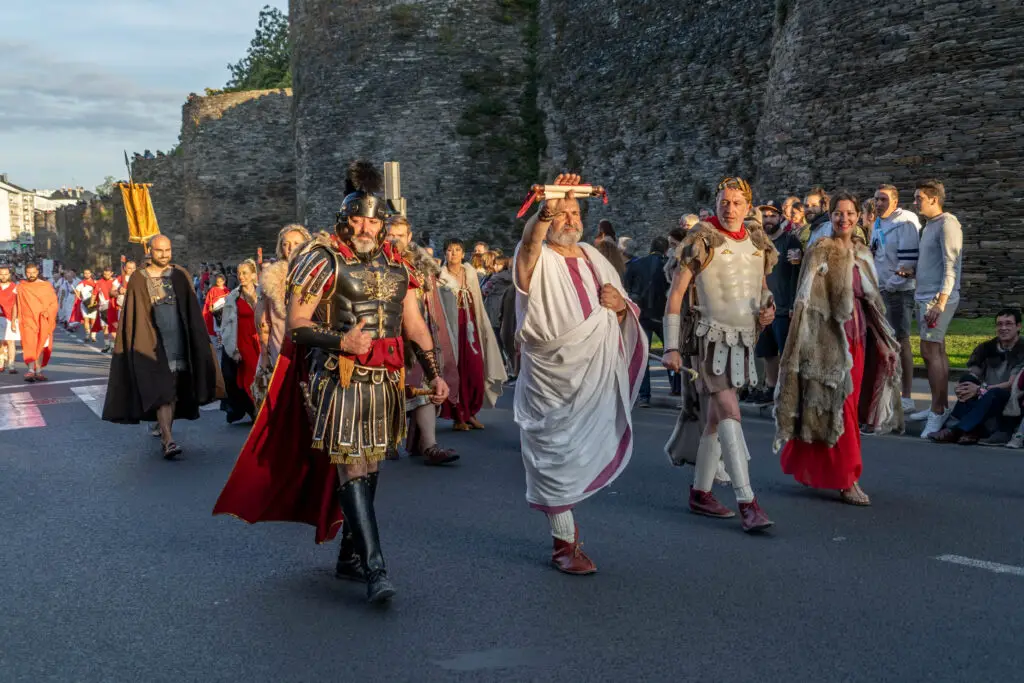
Romans took dinner parties to a whole new level by incorporating live entertainment that often crossed into the macabre. Wealthy hosts spared no expense, hiring acrobats, musicians, poets, and dancers to perform during lavish meals. Some parties even featured exotic animal tamers or staged dramatic reenactments of famous battles. But for the truly extravagant, the entertainment sometimes involved human sacrifice. Victims—usually prisoners of war or criminals—were occasionally offered up as part of the spectacle, adding a grim layer to the evening’s festivities.
While human sacrifice wasn’t a common feature of most parties, the fact that it occasionally occurred speaks volumes about Roman decadence. The gruesome acts were seen as both religious homage and a display of power and wealth by the host. Guests were expected to maintain decorum, even as blood was spilled before them, further emphasizing the Romans’ complex relationship with violence and entertainment. It’s hard to imagine today’s dinner parties reaching such terrifying heights.
9. The Saturnalia Role Reversals
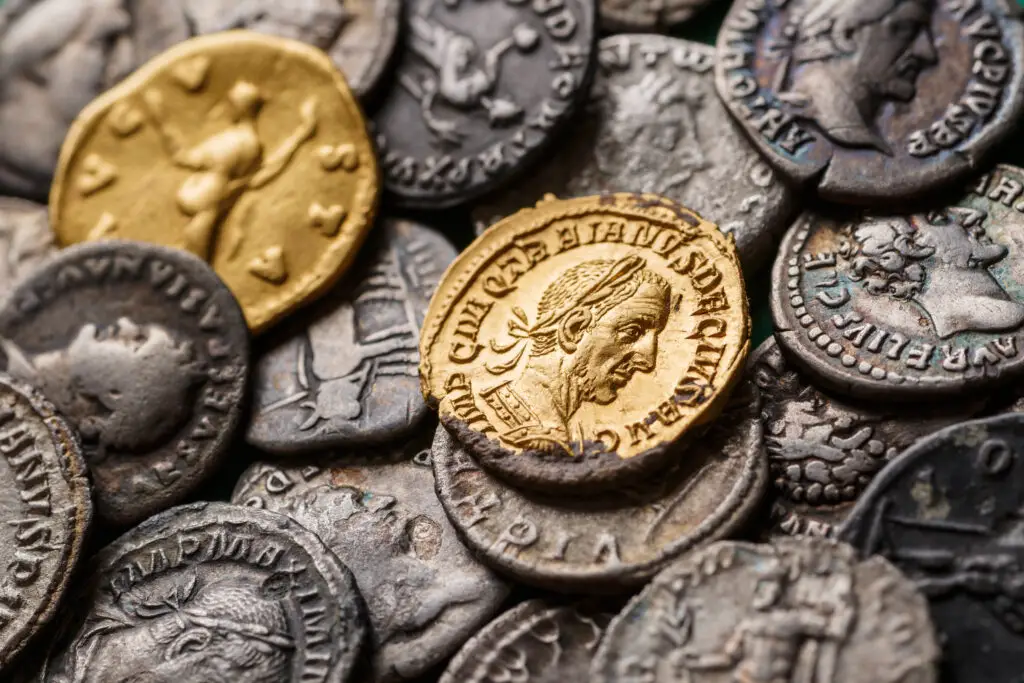
Saturnalia was one of the most anticipated festivals in Rome, a celebration dedicated to Saturn, the god of agriculture and time. What made this festival stand out was its complete overturning of social norms. For several days, slaves were allowed to switch places with their masters, donning fine clothes and being treated as equals. Masters served meals to their servants, and the usual rules of etiquette were tossed aside. The festival was marked by feasting, singing, gift-giving, and general merrymaking, creating an atmosphere of joyous anarchy.
This role reversal wasn’t just a temporary escape; it was a symbolic gesture reflecting hopes for equality and freedom, even if only for a few days. The loosening of social structures allowed Romans to let off steam and forget the rigid class divides that defined much of their daily life. Imagine the most lavish office holiday party where the boss serves the staff—Saturnalia was like that, but with more wine, less structure, and a whole lot more chaos.
10. Gladiator Fights as VIP Entertainment
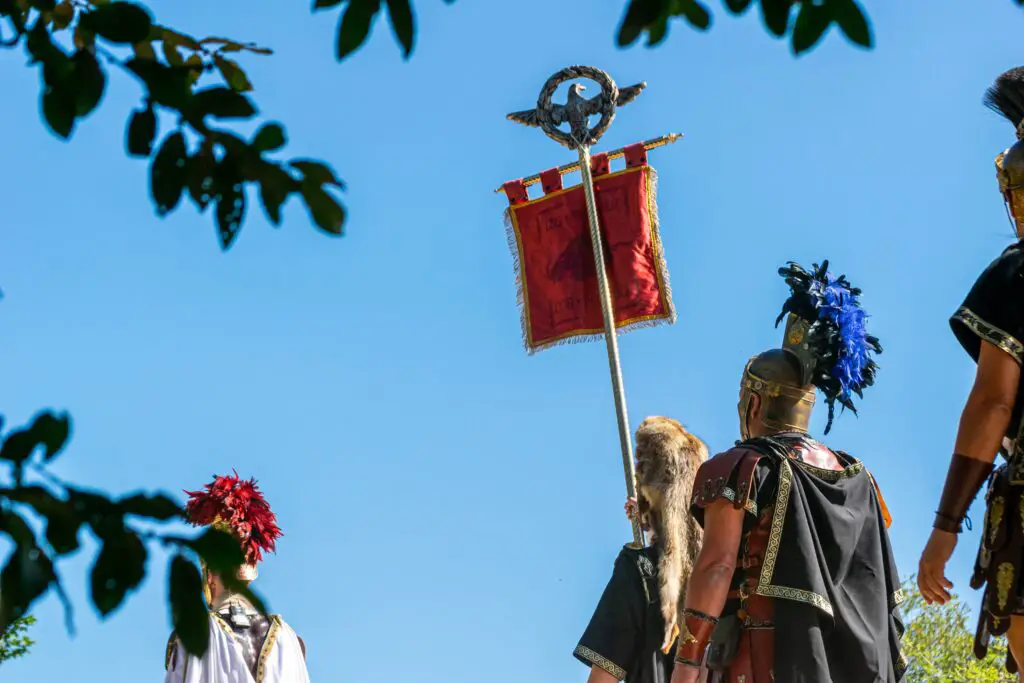
While gladiator matches are often portrayed as public spectacles, the Roman elite enjoyed private gladiator fights at their own extravagant gatherings. Wealthy hosts would set up private arenas or use parts of their villas to stage brutal matches for their select guests. These fights were more than mere entertainment; they were demonstrations of power and displays of the host’s ability to command life and death. Emperor Commodus famously participated in these combats himself, flaunting his strength and ruthlessness before an eager audience.
The matches were intense, featuring highly trained combatants who fought with swords, tridents, and nets, sometimes against wild animals or one another. For the guests, the thrill of watching a gladiator’s skill and survival was the highlight of the evening. While modern VIP experiences might offer exclusive dining or celebrity meet-and-greets, Roman aristocrats had gladiators battling it out in their own backyards. The combination of danger, blood, and bloodsport made for a chilling yet captivating experience.
11. The Peculiar Practice of Dinner Guest Seating
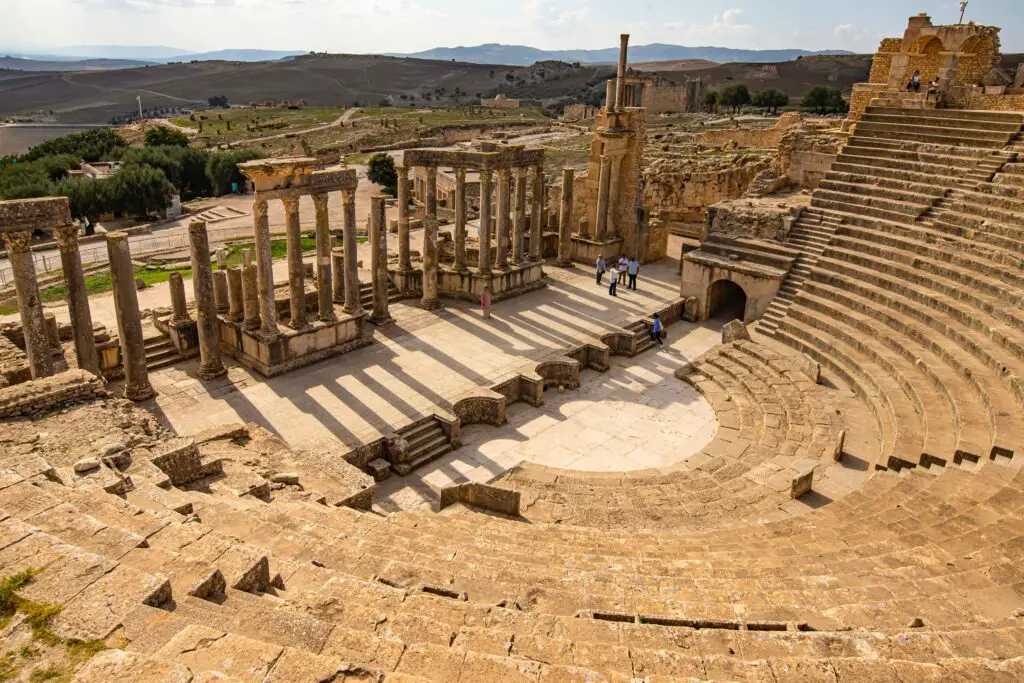
Roman dinner parties weren’t just about the food and entertainment; seating arrangements were a crucial part of the social ritual. Hosts meticulously planned where each guest would sit, often placing the most honored guests in positions of prestige, close to the host. The seating followed strict social hierarchies, with the order reflecting a guest’s status and relationship to the host. It was considered a grave insult to be seated improperly, and hosts took great care to avoid social faux pas.
But the seating ritual had its quirks. During extravagant feasts, some hosts played with the arrangement, moving guests around to spark conversation or create social tension for amusement. In some cases, guests were seated according to humorous or satirical themes, poking fun at social norms and allowing the elite to mock their peers under the guise of festivity. This mix of strict hierarchy and playful mockery added an unpredictable twist to Roman banquets, making the seating plan as much a part of the entertainment as the food and drink.
12. Gladiator Weddings—Yes, That Happened

In the midst of their brutal profession, some gladiators found time for love and marriage. Gladiator weddings were extravagant affairs where combatants celebrated their unions between or after bloody battles. These ceremonies weren’t modest affairs; they included ritual sacrifices, gladiatorial duels, and massive feasts. Gladiators would wear ceremonial armor for the ceremony, and the celebrations often mirrored the pageantry and spectacle of their arena matches.
The union symbolized more than love; it was a statement of resilience and humanity amid the violence of the gladiatorial life. Some emperors allowed gladiators to marry as rewards for bravery or as symbols of imperial favor. These weddings were as much about romance as they were about reinforcing social and political statements. While the idea of athletes tying the knot between competitions seems odd today, for Roman gladiators, it was just another extension of their dramatic and dangerous existence.
13. Emperor Nero’s Wild Extravaganzas
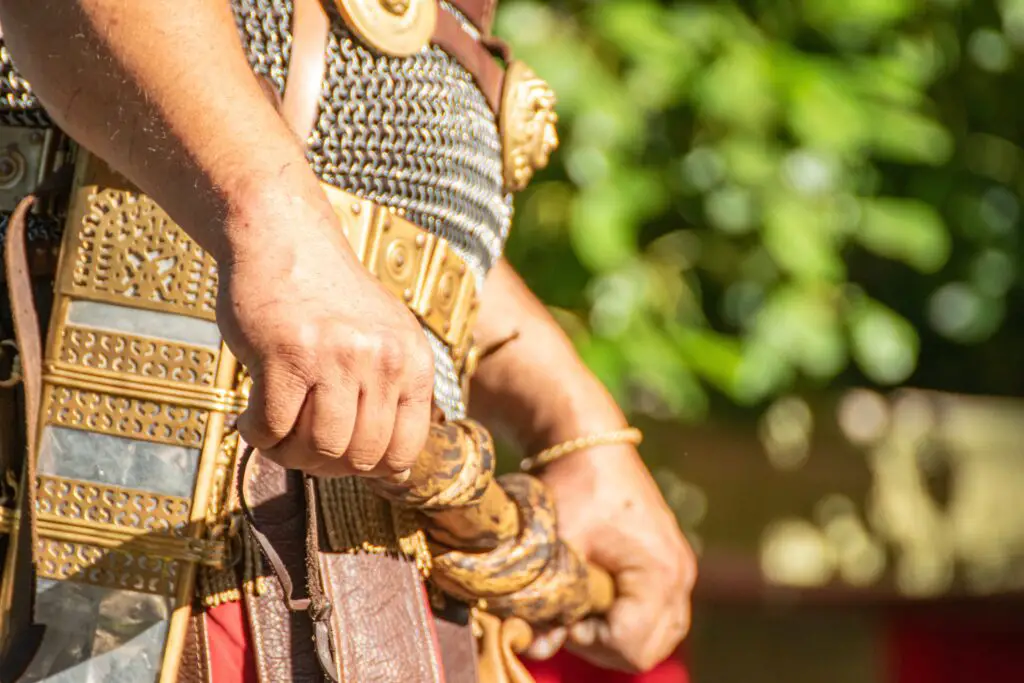
Emperor Nero took decadence to new extremes with parties that redefined Roman excess. Known for his love of the arts and extreme tastes, Nero hosted banquets that combined the best and worst of Roman extravagance. Guests dined on rare delicacies like flamingo tongues, ostrich brains, and roasted peacock while being entertained by poets, dancers, and musicians. Nero would ensure that the atmosphere was as lavish as possible, with gold decorations, elaborate lighting, and endless wine.
But Nero didn’t stop at food and music; he staged grand spectacles like mock naval battles, where entire arenas were flooded to recreate epic sea conflicts. The emperor’s parties were more than social events; they were displays of imperial power, wealth, and complete disregard for moderation. Nero used these extravagant gatherings to flaunt his dominance and artistic flair, making guests feel both awestruck and overwhelmed. Compared to Nero’s parties, modern celebrity bashes are quaint at best.
14. Religious Festivals That Became Parties
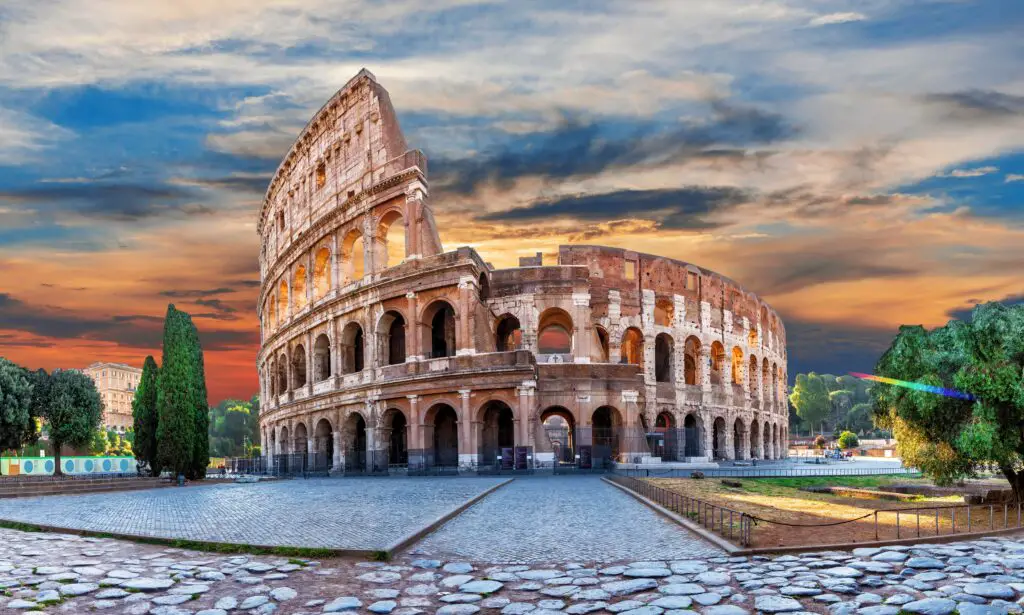
Religious festivals in Rome started as solemn rituals but often morphed into grand parties where the sacred and the profane mixed freely. Festivals like Floralia, dedicated to Flora, the goddess of flowers, and Lupercalia, which honored fertility and protection, became events of excessive celebration. During these festivals, Romans engaged in feasts, games, theatrical performances, and uninhibited revelry. Lupercalia, in particular, included rituals where participants ran through the city, striking bystanders with strips of goat hide as a fertility blessing.
These festivals blurred the lines between religious observance and pure celebration, where honoring the gods meant throwing caution to the wind. For the Romans, these events were about community, renewal, and the release of everyday tensions. While modern festivals might focus on music or food, Roman celebrations combined the sacred with extreme merrymaking, ensuring that the gods were honored with maximum abandon. It’s a reminder that, for Romans, devotion and decadence often went hand in hand.
